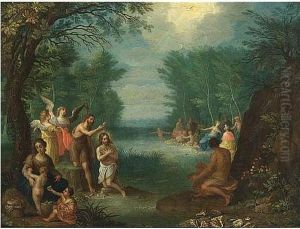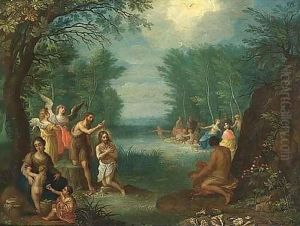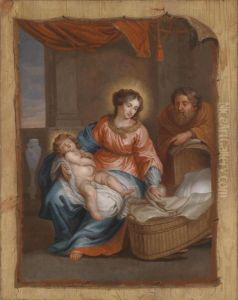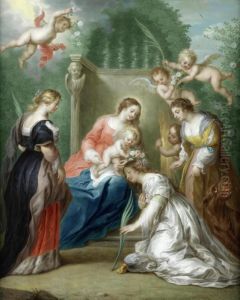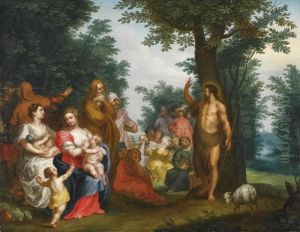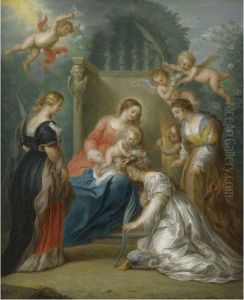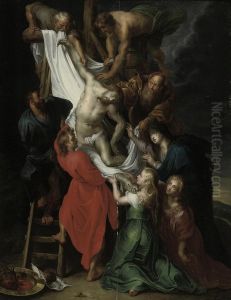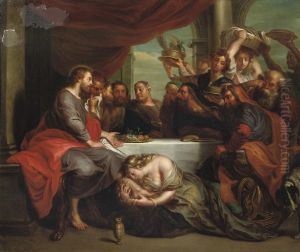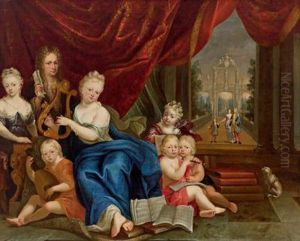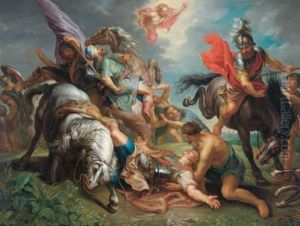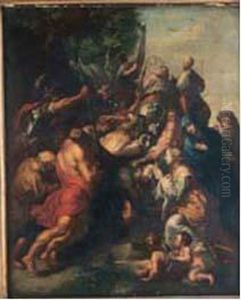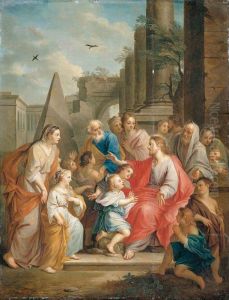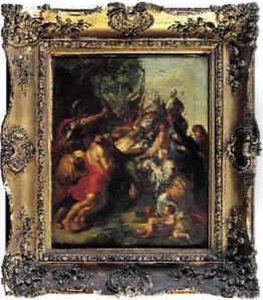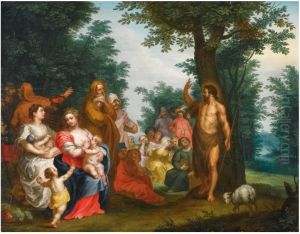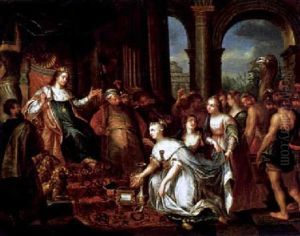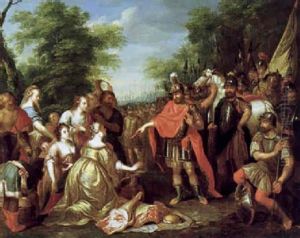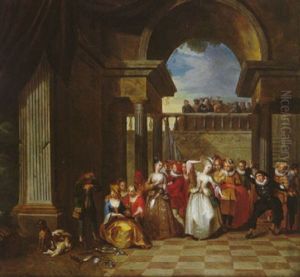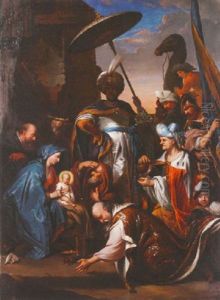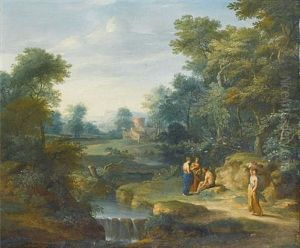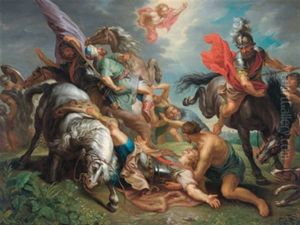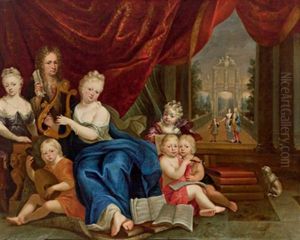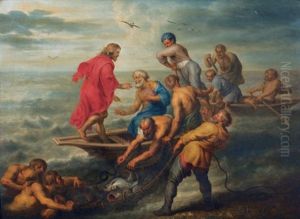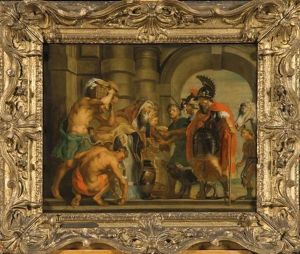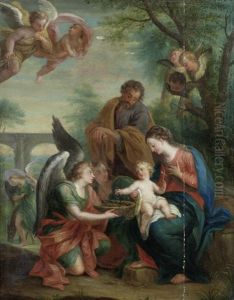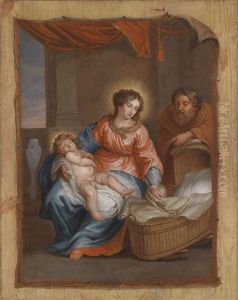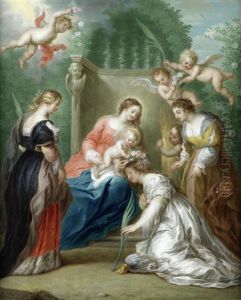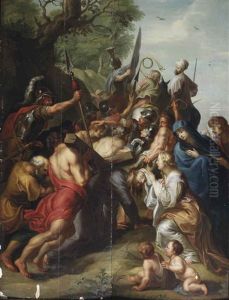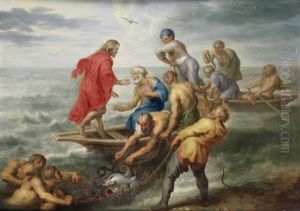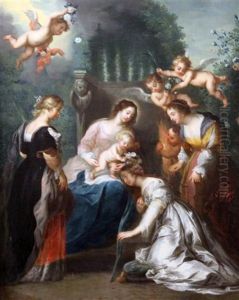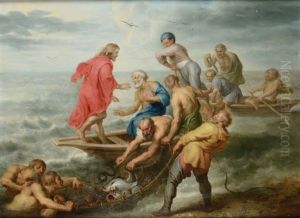Jacob Andries Beschey Paintings
Jacob Andries Beschey was a Flemish painter and draughtsman who played a significant role in the Flemish art scene of the 18th century. Born in Antwerp, he was part of the Beschey family, a dynasty of painters that had a considerable impact on the artistic landscape of the time. Jacob Andries was the son of Andries Beschey and brother to Balthasar Beschey, both of whom were also painters, which suggests that he grew up in an environment steeped in artistic tradition.
Jacob Andries Beschey began his artistic training under the guidance of his older brother Balthasar, who was not only a painter but also a dealer and art teacher. This apprenticeship was crucial in shaping Jacob's early career, providing him with the foundational skills and exposure needed to establish himself in the competitive art world of the 18th century. His work primarily consisted of landscapes and history paintings, genres that were highly popular among the art patrons of his time.
In 1753, Jacob Andries Beschey became a master in the Antwerp Guild of Saint Luke, a testimony to his skills and reputation as an artist. This affiliation further cemented his status in the art community and provided him with more opportunities to showcase his work. Throughout his career, Beschey remained active in Antwerp, contributing to the city's artistic legacy.
Despite the prominence of his family, Jacob Andries Beschey's work was often overshadowed by the achievements of his brother Balthasar and the changing tastes in art that emerged towards the end of the 18th century. Nevertheless, his landscapes and historical scenes are valued for their contribution to the Flemish tradition, characterized by their detailed execution and vibrant portrayal of nature and historical events.
Jacob Andries Beschey's death in 1786 marked the end of an era for the Beschey family's involvement in the Flemish art scene. Although not as widely recognized today, his contributions to the landscape and historical painting genres hold a significant place in the study of Flemish art history. His works continue to be appreciated by art historians and collectors for their craftsmanship and historical value.
